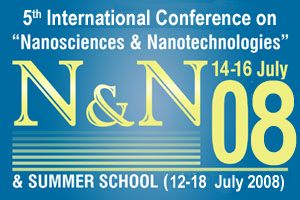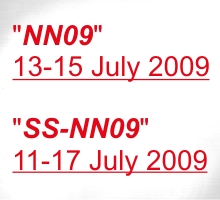Thessaloniki Useful Information
About Thessaloniki
Greece's second largest city, capital of Macedonia in the north, was the realm of Alexander the Great and named after his sister, Thessaloniki, when it was founded in 316 BC. It sits in a bowl framed by low hills, facing a bay on the Gulf Thermaikos. Despite being one of the oldest cities in Europe, today Thessaloniki is lively and modern, with wide avenues, parks and squares. In 1917 most of the city was destroyed in a massive fire, and rebuilt later. This is not a high-rise city, though, because the area is prone to earthquakes and regulations have been imposed preventing the building of skyscrapers. This means that residents and visitors alike can enjoy the seaside situation of Thessaloniki, with views aplenty from the city streets. The main squares are Platia Elefterias and Platia Aristotelous, both on the waterfront and alive with cafes and restaurants, children playing or people just strolling. Thessaloniki, having been under Ottoman rule for long periods in its history, has been left a legacy of numerous Byzantine churches, and museums housing Byzantine art and artefacts. The city also has a heritage of early Christian communities, particularly the renowned monasteries of nearby Mount Athos.
Also visit: http://en.wikipedia.org/wiki/Thessaloniki
Archaeological Museum
Regarded as one of the finest museums in Europe, Thessaloniki's Archaeology Museum near the famous White Tower and opposite the city's international fairgrounds, houses a huge collection including the incredible treasures of the tomb of Alexander the Great's father, Phillip of Macedon, which was discovered at Vergina in 1977. Another treasured artefact is the 3rd century BC Derveni papyrus, the only intact ancient papyrus found in Greece, which was discovered in the tombs of Derveni.
Also visit: http://www.amth.gr
The White Tower
The city's most famous landmark, the White Tower was originally built as part of the city walls. It now stands, no longer white but still imposing, on the seaside promenade south of the Archaeological Museum, having been restored and offering panoramic views of the city and harbour from its rooftop café. The tower was once used as a prison, and on the way up the winding staircase visitors can peep into the dim rooms that were used as cells. The tower contains a museum housing some Byzantine art and historical artefacts from Thessaloniki's history between 300 and 1,500 AD.
Churches
Thessaloniki has numerous beautiful churches, large and small, dating from various eras, most notably Byzantine. Most are sited in the Upper City area, which is a warren of quaint, narrow cobbled streets and has become a fashionable quarter favoured by local city slickers. Some of the most important churches are the church of Saint George, a domed building dating from the 4th century AD, which was originally the mausoleum for Roman Emperor Galerius; Agia Sofia, the domed cruciform church built in the 8th century AD that is a copy of the Agia Sophia in Constantinople; Agoi Apostoli from the 14th century, with its rich Byzantine decorations; and the 14th-century Agios Nikolaos Orfanos with it's beautiful frescoes. Churches are wont to close in the afternoons and sightseers are expected to dress appropriately
Roman Forum
Close to one of the city's main bus terminals in Dikasterion Square lies the archaeological site of the ancient Greek agora or marketplace, which was later expanded to become a Roman forum on two levels. The forum was the heart of the ancient city, and was discovered by workmen in the 1960s. The best-preserved component of the forum is the large theatre, which is still used for occasional summer concerts.
Mount Athos
Only men are welcome to make a pilgrimage to Mount Athos, about 129 km south east of Thessaloniki, where it is possible to step back in time and mingle with hundreds of monks, from more than 20 monasteries, in one of the most scenic spots in Europe. This unique mountainous enclave on the coast is sprinkled with huge monasteries, most resembling castles, containing wonderful frescoes, mosaics and libraries. Mount Athos is a self-governing area within Greece, and to visit it is necessary to obtain a permit from the Ministry of Foreign Affairs in Athens, or from the Ministry of Northern Greece in Thessaloniki
Aigai or Vergina
Vergina, known in ancient times as Aigai, is about 61 km west of Thessaloniki and is the most important of a cluster of three archaeological sites in the area connected with Philip, father of Alexander the Great. Vergina is where Philip built a massive palace and a theatre, and where he was assassinated in 336 BC. The palace has been excavated, as has the theatre and the site also features hundreds of burial mounds, some dating from the Iron Age, across the plain. The tomb of Philip was found here undisturbed in 1977, full of treasures that are now on display in Thessaloniki's Archaeological Museum. Nearby is Pella, the remains of the former capital of Macedonia from the 5th century, where Alexander the Great was born; and Dion, an important religious sanctuary frequented by Philip and Alexander.



